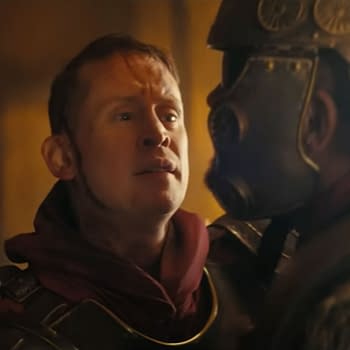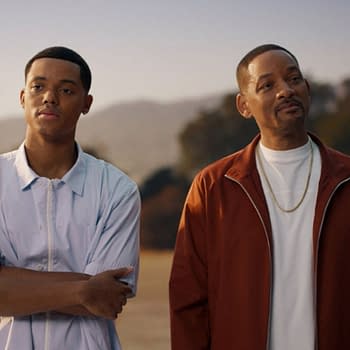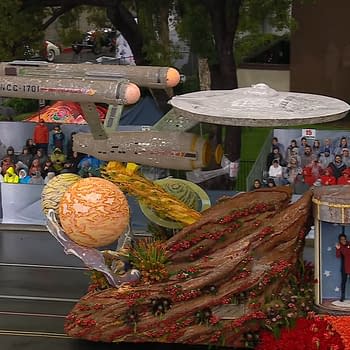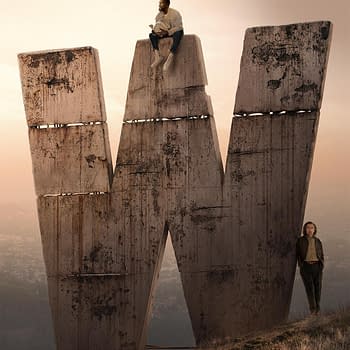Posted in: Disney+, Star Wars, TV | Tagged: disney, ilm, industrial light and magic, The Mandalorian
The Mandalorian: Pixomondo's Goran Backman Talks Visual Effects
One of the biggest hits in 2019 was The Mandalorian on Disney+. Among the attributes drawing the highest praises is the use of practical effects, including bringing The Child (aka Baby Yoda) to life. Goran Backman of Pixomondo helped bring those effects to life speaking to Screen Rant. "With The Mandalorian, we have embarked on what I believe will be a bit of a revolution in our industry," he said. "[Industrial Light and Magic] teamed up with Epic Games and created a new way to shoot content. We no longer must travel to specific locations to shoot, worry about the cost of recreating classical locations, or whatever wrench the weather might throw-in."
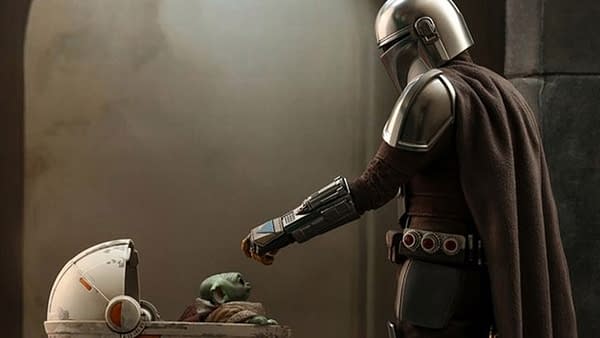
How The Mandalorian is Shot
Backman went into detail about how the collaboration revolutionized what they can do on set. "They developed what we called the Volume, which is a massive set of LED panels in a cylindrical shape surrounding a practical set," he said. "These LED panels displays real-time CG imagery powered by Unreal Engine. The practical camera is tracked in real-time with the virtual camera, so when your practical camera is moving, you also now see the background shifting perspective and parallaxing correctly. Now all you have to create practically is the area inside the volume, and you'll end up with a full environment. This is a set setup inside a limiting sound stage, but through the lens, it looks like a vast landscape."
Backman continued talking about how the system allows those to update the lighting in real-time as scenes are shot. "This adds a bunch of other benefits. You don't have to worry as much about lighting your subjects in a specific way to make them sit within an environment that you have yet to create, because all these LED panels are now lighting up the subjects with the correct brightness and color of the environment that we're in. Everything sits together as it should. The director can see the final shot and what it's actually going to look like live, and approve shots that would previously have to be a traditional post-production type of job. So, it's going to change how we make movies and television, for sure. It's one of the largest leaps in our industry that I've experienced."

When it comes to translating the big-budget production of Star Wars and putting into the small screen, Backman stressed how efficiency played a factor. "That is a big challenge because it is, after all, a TV show, and people are used to features, as you say," he said. "The solution is being efficient with your work. You have to have a lot of good communication. Richard Bluff, ILM VFX supervisor, and their whole team always ensured we'd have a great starting point. They gave us plenty of concept drawings and anything that would be applicable or related to our shots and the assets that we were creating. We also took time to discuss the things that were important to them to tell the story, so we knew what to focus on. This really helped us out in trying to get something that's going to hold up on a TV budget. Star Wars has a high bar, for sure, but it's exciting tackle something like that and making sure it's as polished as it should be." To see more of Backman talking about recreating classic Star Wars settings, working on films compared to TV, the biggest challenges on set of The Mandalorian and Baby Yoda, head over to Screen Rant. The second season premieres October.










